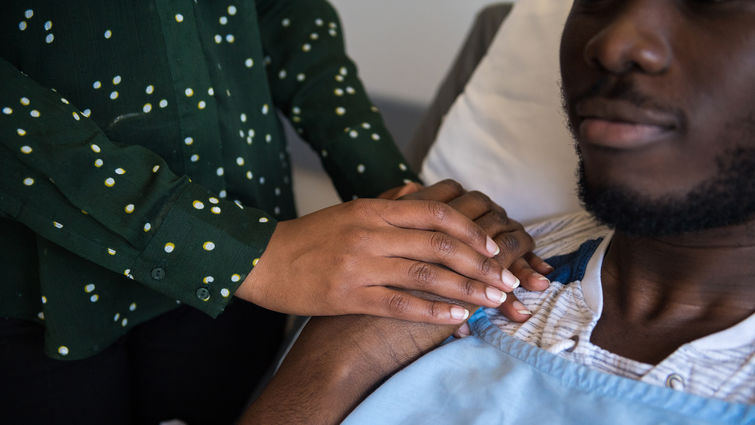
Director of Research at the BMC provides statistics supporting a successful, integrated future.
In July of 2021, Loma Linda University Health received a $7.4 million grant from the State of California Department of Health Care Services to enhance behavioral health integration. The Behavioral Medicine Center was dedicated then and now to integrating specific specialties to ensure patients within the organization receive access to mental health services. Brian Distelberg, PhD, director of research at Loma Linda University Behavioral Medicine Center, said this grant showed a glimpse into a successful integrated future.
Pediatric Ambulatory
BMC hired therapists who provide onsite care at pediatric specialty clinics and the Children’s Hospital. The primary focus has been enhancing assessment screening for mental health and substance use needs in all pediatric patients. These tools, which did not exist before, have been implemented as preventive measures to allow onsite therapists to assess the child on the same day as their appointment. Specific areas assessed are health-related quality of life, mental health, and substance use.
“Our therapists are acting as a bridge between the physical health world and behavioral health world,” Distelberg said. “It’s extremely beneficial for the patients and families to hear the options from educated personnel at the immediate rise of concern instead of a phone call days later.”
Approximately 300 pediatric patients are screened every quarter. About 10% more children are flagged for higher mental health needs. This program sees about a 160% greater effect than most competitor programs.
This program has directly affected the increase of patients in the MEND Program for children with chronic illness and regaining emotional balance during medical treatment.
“Everyone loves this program, and sustainable funding will allow this program to continue,” Distelberg said.
Maternal-Fetal Medicine
With a similar model to pediatric ambulatory, full-time therapists are embedded and respond to the OBGYN clinic. Enhanced screening tools allow onsite therapists to identify post-partum depression and substance use. These tools are used at new mom appointments, week 6 in pregnancy, and during the hospital stay immediately after delivering their baby.
Therapists have a designated space to build relationships and conduct onsite outpatient therapy sessions in the OBGYN clinic.
“This is awesome because the proximity also reduces the stigma surrounding mental health services,” Distelberg said.
Due to the unfortunate dilemma of limited healthcare insurance among adult patients, some of this funding has supported a student training clinic where adults with limited behavioral healthcare access can receive the care needed.
Diabetes Treatment Center
Adults with severe mental health issues have a high prevalence of type two diabetes. Studies are still being conducted to learn more about this connection.
As a preventive measure, BMC has created new best practice protocols by screening for diabetes in all BMC inpatient adults. An onsite registered nurse from the Diabetes Treatment Center conducts A1C tests and immediately educates those who have screened high for diabetes.
“As a whole, I think Loma Linda University Health is doing a great job learning more about this as well as taking the necessary preventive measures,” Distelberg said.
Emergency Department
Nearly all patients coming into the Loma Linda Emergency Department (ED) are screened for depression, substance use, and other possible mental health disorders. The three-tiered system allows onsite therapists to assess if a patient is severe, moderate, or low on mental health need in the ED and immediately begin those services as well as help connect the patient to services after their ED stay.
Patients ranking low on this scale are directed to one of four patient navigators that have been hired due to this grant. The patient navigator is not bound to the ED and acts as a floater with the patient in the Loma Linda University Health system to ensure the patients are getting to the next level of care needed, such as the SAC Health Clinic.
Moderately ranked patients will also be assigned to a patient navigator but the patient will typically be routed to a BMC level of care like the intensive outpatient program.
Severe populations are routed to a team consisting of physiatrists, psychiatry residents, and registered nurses. The Psychiatry Emergency Service team’s goal is to route severely ranked patients to an inpatient facility in the area, including the BMC.
The goal of this program is to ensure high follow-up rates and catch low and moderate patients before their condition worsens.
National follow-ups by these types of patients are typically in the 30% range. The BMC is currently seeing 60 to 65% follow-ups.
“I credit this incredible number to what the therapists and navigators are doing,” Distelberg said. “This program has allowed us to identify individuals who may have been missed or forgotten without this integrated process.”
Distelberg said the grant has allowed therapists to create relationships with patients, and he truly feels these programs are already impacting the community.
For more information on services available at the Behavioral Medicine Center, visit llubmc.org.
